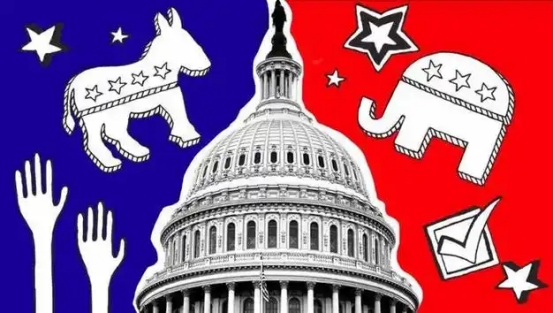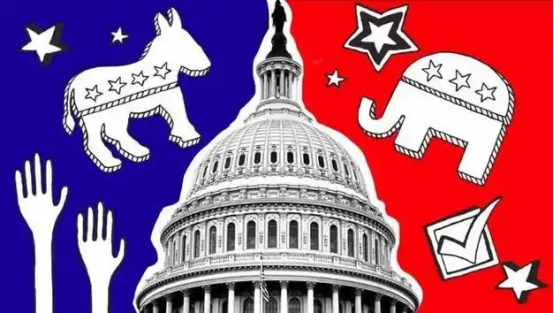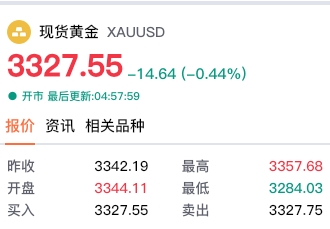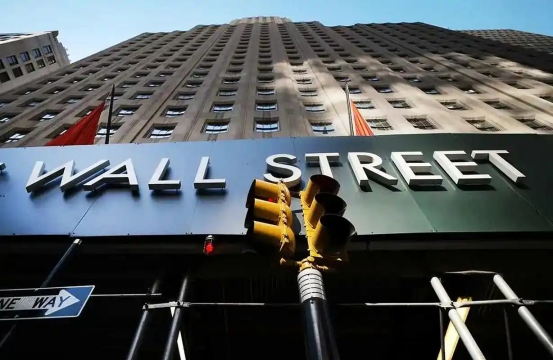Democrats warn Trump that "Fixing Powell = stock market crash"! Gold soars against the trend, and 90% of Wall Street funds suffer losses
- 2025年4月23日
- Posted by: Macro Global Markets
- Category: News

Democrats warn Trump that "Fixing Powell = stock market crash"! Gold soars against the trend, and 90% of Wall Street funds suffer losses


1. Schumer's "stock market crash warning"
Chuck Schumer delivered an emergency speech in the Senate on April 18, harshly accusing Trump of "political interference" in the Federal Reserve: "If the president tries to bypass legal procedures to remove Powell, it will be a 'suicidal attack' on the U.S. financial system. During the stock market crash in 1987, the Federal Reserve stabilized the market by decisively cutting interest rates, but the current policy environment is more fragile than it was then." Schumer quoted the views of former Federal Reserve Chairman Greenspan, saying that if the independence of the Federal Reserve is damaged, the S&P 500 index may plummet by more than 20% in a single day.
2. Trump’s “abdication” action
On April 17, Trump once again blasted Powell for his "slow action" on social media and hinted that he might remove him from office early: "The sooner Powell leaves, the better. His policies are suffocating American businesses." This statement echoes the White House's recent intensive contact with dovish figures such as former Federal Reserve Board Governor Warsh. Although Powell stressed that "the law does not allow the president to fire the Federal Reserve chairman," the market has begun to price in the risk of "Powell's unexpected resignation" - interest rate futures show that if Trump forces a replacement, the probability of a rate cut in June may soar from the current 60% to 85%.
3. The ghost of the 1987 stock market crash reappears
Economist Peter Schiff warned that the current volatility in the U.S. bond market has shown signs of the 1987 crisis: the 10-year U.S. bond yield has exceeded 4.5%, and the 30-year yield has reached 5%. If the Federal Reserve does not urgently launch "rate cuts + QE", the stock market may collapse by 20% in a single day. It is worth noting that in 1987 the Federal Reserve saved the market through "unlimited liquidity injection", but current inflationary pressure (core PCE increased by 2.9% year-on-year in March) makes it difficult for Powell to replicate this strategy.
2. Gold "reigns in troubled times": Fund losses and risk aversion resonate
1. Hedge funds are wiped out
Top Wall Street institutions suffered a setback in this storm:
Renaissance Technologies: The flagship fund lost 8% in April, and its annual return was halved from 11.3% to 4.4%.
Citadel: Multi-strategy funds retreated 12% in a single week, the biggest drop since May 2021.
Bridgewater Fund: Although the flagship product PureAlpha II has risen 11.3% this year, the macro hedge department lost 5% due to misjudgment of the US Treasury bond trend.
Bloomberg data shows that 90% of the world's top 50 hedge funds have failed to outperform gold - spot gold has risen 27.8% this year, while the S&P 500 has fallen 7% during the same period.
2. Gold’s “driving logic”
Stagflation trade: Tariffs pushed up the prices of imported goods, core PCE rose to 2.9% year-on-year in March, while the consumer confidence index plummeted to the lowest level since 2011, and real interest rates continued to be negative, strengthening the attractiveness of gold.
Geopolitical risk aversion: The deadlock in Russia-Ukraine negotiations and the increasing uncertainty of Trump's tariff policy have driven a net inflow of 53.64 million yuan in gold ETFs. The People's Bank of China has increased its gold holdings to 2,200 tons for 12 consecutive months.

1. The “economic toxicity” of tariff shocks
On April 18, the Trump administration announced additional tariffs on medicines, covering 80% of U.S. imports of raw materials, directly impacting the medical supply chain. The Peterson Institute for International Economics estimates that aggressive tariff policies will reduce the US GDP growth rate by 1.05% in 2025, and the unemployment rate may rise from 3.6% to 5.2%. What’s more serious is that tariffs have pushed up the average annual household expenditure by $5,000, forming a “death spiral” together with the deterioration in consumer confidence.
2. The Fed’s Dilemma
Powell stated on April 16 that "a rate cut is not considered for the time being", but the market has bet that the probability of a rate cut in June is 60%. China Merchants Securities estimates that if the tariff impact continues, the Federal Reserve may cut interest rates by a cumulative 100 basis points by 2025. This expectation pushed the U.S. Treasury yield curve steeper, with the 10-year Treasury yield falling below 3.95%, providing support for gold in a "zero interest rate environment."
3. The “survival crisis” of enterprises and capital
Automotive industry: Germany's Audi has suspended the delivery of new cars to the United States, and the hourly wage gap between auto workers in Michigan is as high as 10 times.
Pharmaceutical industry: Eli Lilly and Novo Nordisk cut R&D investment, and Indian API companies face a 10-year capacity transfer cycle.
Capital flows: Fund managers reduced their net allocation of U.S. stocks by 36% in April, the lowest level since May 2023, with funds accelerating into gold, utilities and staples stocks.
The U.S. economy is on the brink of a "policy cliff". The "Federal Reserve war" between the Democrats and the White House, the "margin call" of hedge funds, and the "safe-haven carnival" of gold together constitute the most complex market picture in 2025. For investors, gold is not only a "crisis insurance" to hedge against stagflation and geopolitical risks, but also a "historical witness" to the reconstruction of the global economic order. It is recommended to pay close attention to the minutes of the Federal Reserve meeting on April 22 and the progress of the Russia-Ukraine negotiations. These factors may become catalysts for gold prices to break out of the range.
